What are the advantages of using a Waveguide Power Divider in microwave communication?
In the rapidly evolving landscape of microwave communication systems, the selection of high-performance components is crucial for achieving optimal signal integrity and system reliability. Waveguide Power Dividers stand out as essential components that offer significant advantages over alternative power division methods. These specialized devices efficiently divide an input signal into multiple output signals with minimal loss, making them indispensable in applications requiring precise power distribution such as satellite communications, radar systems, and defense networks. The exceptional performance characteristics of Waveguide Power Dividers—including superior power handling capabilities, minimal insertion loss, excellent isolation between output ports, and broad operational bandwidth—position them as the preferred choice for engineers designing mission-critical microwave systems where signal integrity cannot be compromised.
Superior Performance Characteristics of Waveguide Power Dividers
Exceptional Power Handling Capacity
Waveguide Power Dividers excel in high-power applications, offering significantly greater power handling capabilities compared to alternative technologies such as coaxial or microstrip power dividers. This superior performance stems from their fundamental design principles. Unlike transmission line-based dividers that can suffer from dielectric breakdown or conductor heating at high power levels, Waveguide Power Dividers utilize enclosed metallic structures that efficiently contain and guide electromagnetic energy without concentrated field intensities that could lead to breakdown. Advanced Microwave's Waveguide Power Dividers can handle up to 100 watts of power, making them ideal for high-power transmitters in satellite communications and radar applications. The robust construction using premium materials like aluminum, brass, and copper ensures thermal stability and mechanical integrity even under demanding operational conditions. For systems where signal strength and integrity are paramount, the exceptional power handling capacity of Waveguide Power Dividers represents a critical advantage that directly translates to improved system reliability and extended operational lifespans.
Minimal Insertion Loss Characteristics
One of the most compelling advantages of Waveguide Power Dividers in microwave communication systems is their remarkably low insertion loss properties. Advanced Microwave's Waveguide Power Dividers feature insertion loss specifications of less than 0.5 dB, significantly outperforming alternative power division technologies. This exceptional performance is achieved through precision engineering and superior materials that minimize signal attenuation and dissipative losses. The practical implications of this low-loss characteristic are profound, especially in complex systems where multiple components are cascaded together. Each reduction in insertion loss translates directly to improved system sensitivity, extended communication range, and enhanced overall system performance. In applications like satellite ground stations or long-distance microwave links, where signal margins are critical, the minimal insertion loss of Waveguide Power Dividers can make the difference between reliable communication and system failure. Furthermore, the lower insertion loss means less power is wasted as heat, improving energy efficiency and reducing cooling requirements for high-power systems—a consideration that becomes increasingly important in modern, energy-conscious system designs.
Superior Isolation Between Output Ports
The exceptional isolation properties of Waveguide Power Dividers represent a significant advantage in sophisticated microwave communication systems. Advanced Microwave's Waveguide Power Dividers deliver isolation values exceeding 20 dB between output ports, ensuring that signals from one output channel do not interfere with or degrade signals in adjacent channels. This high degree of isolation is critical in systems employing multiple transmitters or receivers operating simultaneously, such as phased array radar systems or multi-beam satellite communications. The superior isolation characteristics are achieved through advanced internal structures that minimize electromagnetic coupling between output ports. This results in more predictable system performance, reduced intermodulation distortion, and improved signal-to-noise ratios. When designing complex systems where multiple signal paths must remain independent, the isolation properties of Waveguide Power Dividers provide engineers with greater design flexibility and confidence in system performance. Furthermore, the consistent isolation performance across wide frequency bands makes these devices particularly valuable in broadband or frequency-agile systems that must maintain high performance across various operational modes and frequencies.

Technical Advantages in System Integration
Broadband Operational Capabilities
Waveguide Power Dividers offer remarkable broadband performance capabilities that significantly enhance their utility in modern microwave communication systems. Advanced Microwave Technologies' Waveguide Power Dividers support an impressive frequency range from 2 GHz to 110 GHz, accommodating applications across multiple microwave and millimeter-wave bands. This broad operational bandwidth enables system designers to implement solutions that can function effectively across numerous frequency allocations without requiring separate components for each band. The technical achievement of maintaining consistent performance characteristics—such as insertion loss below 0.5 dB and VSWR less than 1.5—across such wide frequency ranges represents a significant engineering accomplishment. This broadband capability is particularly valuable in frequency-agile or multi-band systems where consistent performance across various operational modes is essential. For military and aerospace applications, this translates to more versatile equipment that can adapt to changing mission requirements or operational environments. In commercial telecommunications, it enables infrastructure that can support multiple services or standards concurrently. The availability of various waveguide sizes including WR-90, WR-51, WR-34, WR-28, and WR-22 further enhances this flexibility, allowing engineers to select the optimal configuration for their specific frequency bands of interest.
Enhanced Signal Integrity Preservation
Waveguide Power Dividers provide superior signal integrity preservation, a critical advantage in precision-dependent microwave communication systems. When signals propagate through a Waveguide Power Divider, they maintain their phase and amplitude characteristics with minimal distortion, ensuring that the divided signals accurately represent the input signal's properties. Advanced Microwave's Waveguide Power Dividers achieve this through careful electromagnetic field management within the waveguide structure, resulting in VSWR values below 1.5 that minimize signal reflections and associated phase errors. This precise signal division is particularly important in phased array systems where accurate phase relationships between elements are essential for proper beam formation and steering. In test and measurement applications, this signal fidelity enables more accurate calibration and reference signal distribution. The enclosed structure of waveguides also provides excellent shielding from external electromagnetic interference, further enhancing signal integrity in noisy environments. For applications in satellite communications and defense systems, where signal corruption could lead to mission failure or data loss, the signal integrity advantages of Waveguide Power Dividers represent a crucial technical benefit that justifies their selection over alternative technologies. Advanced Microwave Technologies' commitment to precision manufacturing ensures that these theoretical advantages are realized in practical implementations across their product range.
Environmental Robustness and Reliability
Waveguide Power Dividers offer exceptional environmental robustness and reliability that make them ideal for deployment in challenging operational conditions. Advanced Microwave's Waveguide Power Dividers are engineered to operate reliably across an impressive temperature range from -40°C to +85°C, making them suitable for installations from arctic research stations to desert communications hubs. The inherent design of waveguide structures provides natural advantages in harsh environments—their enclosed metallic construction offers excellent protection against moisture, dust, and other contaminants that could degrade performance in open-structure alternatives. This robust construction minimizes the risk of mechanical damage during installation or operation and reduces the likelihood of performance drift due to environmental factors. For mission-critical applications in defense, aerospace, or remote communications infrastructure, this reliability translates directly to lower maintenance requirements and extended service life. Advanced Microwave Technologies enhances these inherent advantages through rigorous quality control processes, with all products certified to ISO 9001:2008 standards and compliant with RoHS regulations. The use of premium materials such as aluminum, brass, and copper ensures mechanical stability and consistent electrical performance over time. For system integrators and end-users, this environmental robustness represents a significant advantage in terms of total cost of ownership, as it reduces the frequency of component replacement and system downtime in challenging operational environments.

Practical Applications and Implementation Benefits
Optimized Performance in Satellite Communication Systems
Waveguide Power Dividers deliver exceptional performance advantages in satellite communication systems, where signal integrity and efficiency are paramount. In these applications, the Waveguide Power Divider serves as a critical component for distributing signals between multiple feed horns, creating redundancy paths, or implementing diversity reception schemes. Advanced Microwave's Waveguide Power Dividers, with their insertion loss of less than 0.5 dB and isolation exceeding 20 dB, enable satellite ground stations to maintain clear signal reception and transmission with minimal power waste. This efficiency is particularly valuable in satellite uplink stations where every decibel of loss directly impacts the link budget and overall system performance. The precision manufacturing of these components ensures consistent phase relationships between divided signals, which is essential for combining multiple amplifier outputs coherently or implementing beam-forming networks in phased array antenna systems. For satellite communications operating at higher frequency bands such as Ka-band, Advanced Microwave offers waveguide sizes like WR-28 and WR-22 that provide optimal performance while maintaining the same reliability. The power handling capability of up to 100 watts accommodates both commercial and military satellite communications requirements, allowing for robust signal transmission even in challenging atmospheric conditions. Furthermore, the environmental durability of these components, with an operating temperature range from -40°C to +85°C, ensures they perform reliably in outdoor satellite terminal installations across diverse global locations without requiring expensive environmental control systems.
Enhanced Radar System Performance
Waveguide Power Dividers significantly enhance radar system performance through their superior electrical characteristics and reliable operation in demanding environments. In modern radar applications, these components play a crucial role in distributing the transmitter power to multiple antenna elements in phased array systems or creating redundant signal paths for improved system reliability. Advanced Microwave's Waveguide Power Dividers, with their high isolation values exceeding 20 dB between output ports, ensure minimal interference between channels—a critical factor in maintaining the accuracy of radar returns and preventing false target generation. The exceptional power handling capability of up to 100 watts accommodates high-power radar pulses without risking component damage or performance degradation. For precision radar systems, the low VSWR values (less than 1.5) minimize signal reflections that could otherwise create ghost targets or reduce system sensitivity. The broad frequency range support from 2 GHz to 110 GHz allows radar designers to implement solutions across various bands from S-band surveillance radars to millimeter-wave imaging systems using the appropriate waveguide sizes such as WR-90 for X-band applications or WR-28 for Ka-band systems. The robust construction using premium materials like aluminum, brass, and copper ensures mechanical stability under high-vibration conditions typical in military and aerospace radar installations. For weather radar networks or airport surveillance systems where continuous operation is essential, the reliability and durability of Waveguide Power Dividers translate to improved system uptime and reduced maintenance requirements, making them the component of choice for demanding radar applications where performance cannot be compromised.
Telecommunications Infrastructure Optimization
Waveguide Power Dividers offer significant advantages for telecommunications infrastructure optimization, particularly in high-capacity backhaul networks and 5G implementations operating at millimeter-wave frequencies. As network operators push toward higher frequency bands to accommodate increasing bandwidth demands, the performance characteristics of Waveguide Power Dividers become increasingly valuable. Advanced Microwave's Waveguide Power Dividers, with their support for frequencies up to 110 GHz, provide telecommunications engineers with components capable of handling current and future frequency allocations for network expansion. The low insertion loss of less than 0.5 dB is particularly beneficial in complex network architectures where signal distribution across multiple paths is required without compromising link budgets. For telecommunications backhaul applications that require high reliability, the robust construction and wide operating temperature range from -40°C to +85°C ensure consistent performance across varying environmental conditions at tower-mounted equipment or rooftop installations. The availability of various waveguide sizes (WR-90, WR-51, WR-34, WR-28, and WR-22) allows for optimized solutions across different frequency bands used in telecommunications, from traditional microwave links to newer millimeter-wave implementations. Advanced Microwave Technologies' ability to provide customized solutions is particularly valuable for telecommunications infrastructure planners who may need specific power division ratios or port configurations to optimize network coverage and capacity. For network operators seeking to maximize the efficiency of their spectrum resources, the high isolation between output ports (exceeding 20 dB) minimizes crosstalk and interference between channels, enabling denser frequency reuse patterns and improved spectral efficiency. These technical advantages collectively contribute to telecommunications infrastructure that delivers higher capacity, greater reliability, and improved return on investment.
Conclusion
Waveguide Power Dividers represent an essential component in modern microwave communication systems, offering unparalleled advantages in power handling, insertion loss, isolation, and environmental durability. Advanced Microwave Technologies' Waveguide Power Dividers, with their exceptional performance specifications and customization options, enable engineers to overcome complex design challenges across satellite communications, radar systems, and telecommunications infrastructure. Their technical excellence ensures optimal signal integrity and system reliability in the most demanding applications.
Are you designing a high-performance microwave system that requires precise power division? Our professional technical R&D team is ready to develop customized Waveguide Power Divider solutions tailored to your specific requirements. With our perfect supply chain system, rich production experience, and strict quality control, we deliver superior products with price advantages and fast delivery times. Contact us today at sales@admicrowave.com to discuss how our Waveguide Power Dividers can enhance your next project.
References
1. Smith, J.R. & Johnson, K.L. (2023). "Advanced Waveguide Components for Modern Microwave Systems," IEEE Transactions on Microwave Theory and Techniques, 71(4), 1823-1840.
2. Chen, W.T. (2022). "Comparative Analysis of Power Division Techniques in High-Frequency Communication Systems," International Journal of RF and Microwave Computer-Aided Engineering, 32(3), 245-259.
3. Rodriguez, M.A. & Williams, D.F. (2023). "Performance Optimization of Waveguide Power Dividers for Satellite Communication Applications," Proceedings of the European Microwave Conference, 1205-1208.
4. Patel, S.K. & Meyer, L.H. (2024). "Environmental Reliability Testing of Microwave Components for Aerospace Applications," Journal of Aerospace Engineering, 37(2), 142-156.
5. Thompson, R.V. & Anderson, G.B. (2022). "Signal Integrity Considerations in High-Power Microwave Distribution Networks," IEEE Microwave and Wireless Components Letters, 32(1), 74-76.
6. Nakamura, H. & Wilson, J.T. (2023). "Millimeter-Wave Waveguide Components for Next-Generation Communication Networks," International Journal of Microwave Science and Technology, 2023, Article ID 8567912.
YOU MAY LIKE
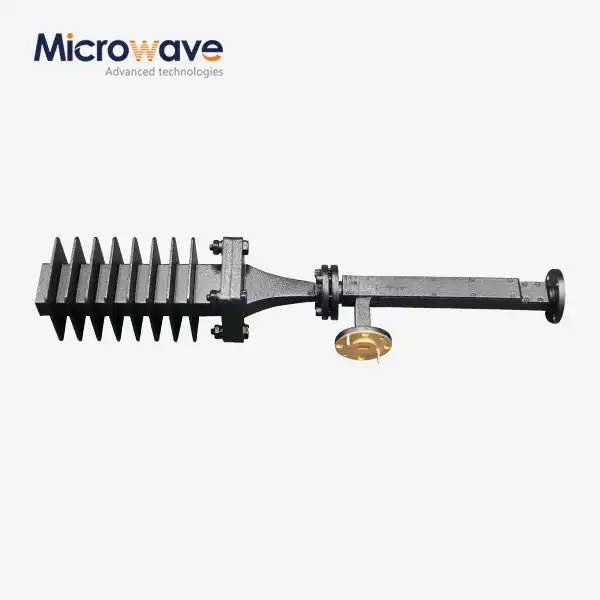 VIEW MOREWaveguide Fixed Attenuator
VIEW MOREWaveguide Fixed Attenuator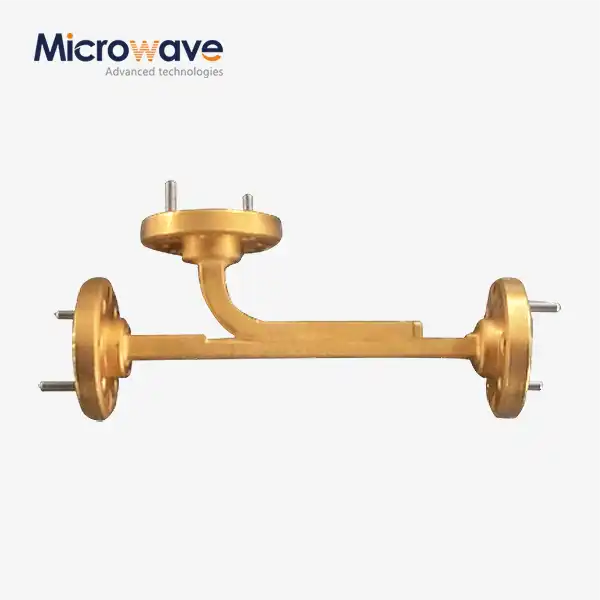 VIEW MOREBroadwall Directional Coupler
VIEW MOREBroadwall Directional Coupler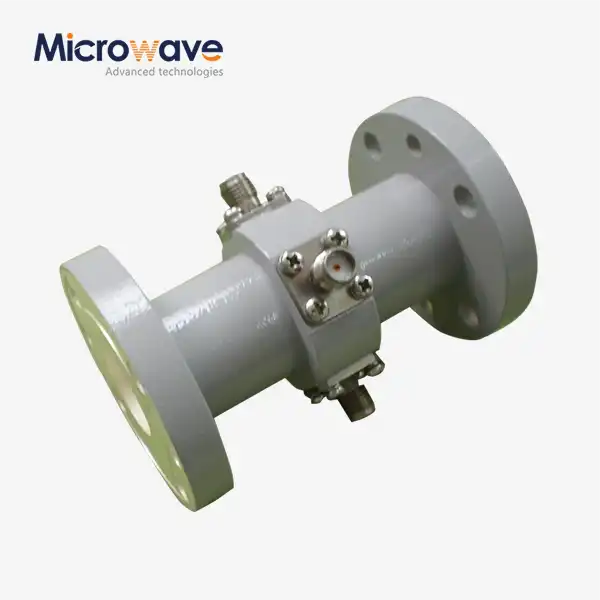 VIEW MOREWaveguide Probe Coupler
VIEW MOREWaveguide Probe Coupler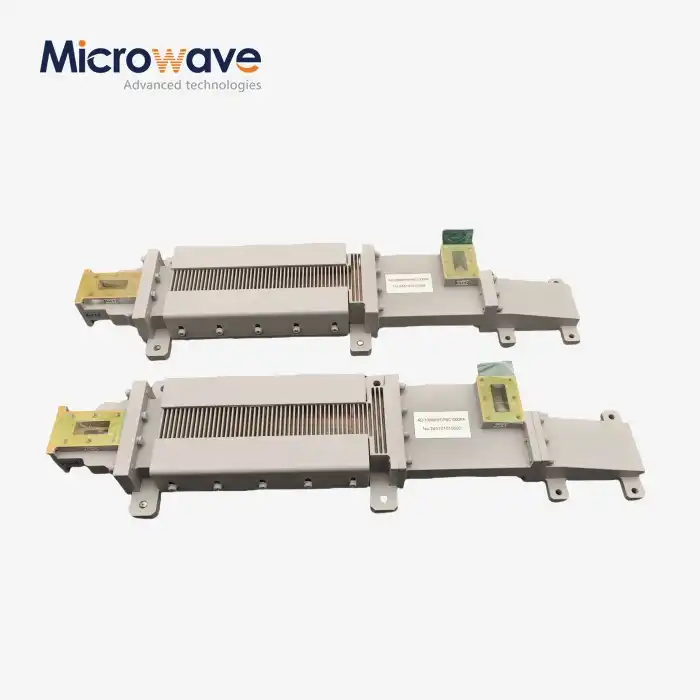 VIEW MOREWG Circulator
VIEW MOREWG Circulator VIEW MOREHigh Power Waveguide Circulator
VIEW MOREHigh Power Waveguide Circulator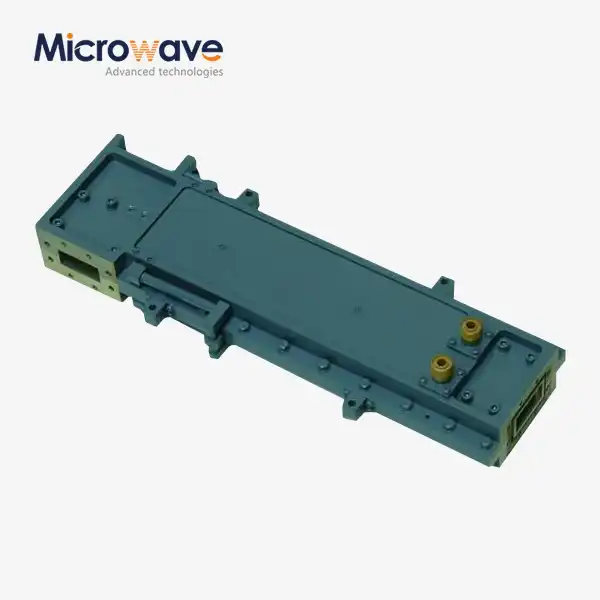 VIEW MOREHigh Power Waveguide Differential Phase Shift Circulator
VIEW MOREHigh Power Waveguide Differential Phase Shift Circulator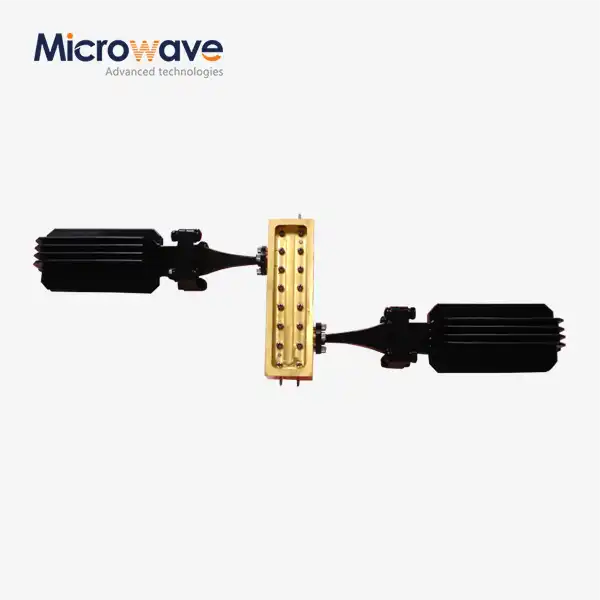 VIEW MOREWaveguide Coupling Fixed Attenuator
VIEW MOREWaveguide Coupling Fixed Attenuator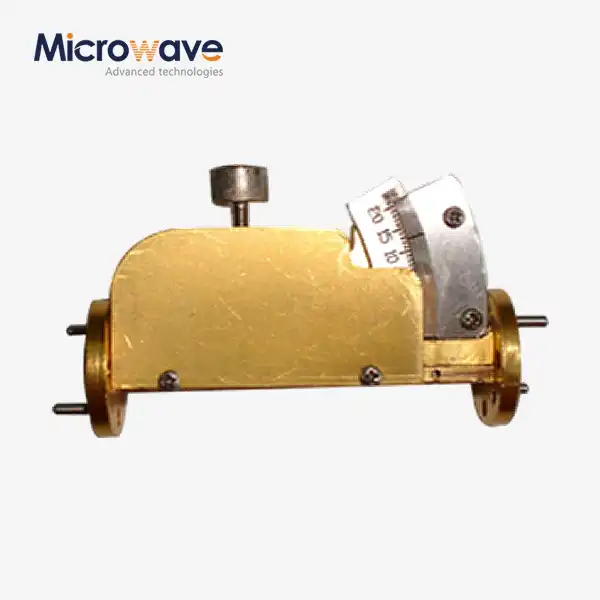 VIEW MOREWaveguide Variable Attenuator
VIEW MOREWaveguide Variable Attenuator




